25 Plants That Attract Butterflies To Your Yard
These plants that attract butterflies will turn your garden into a magical butterfly oasis.
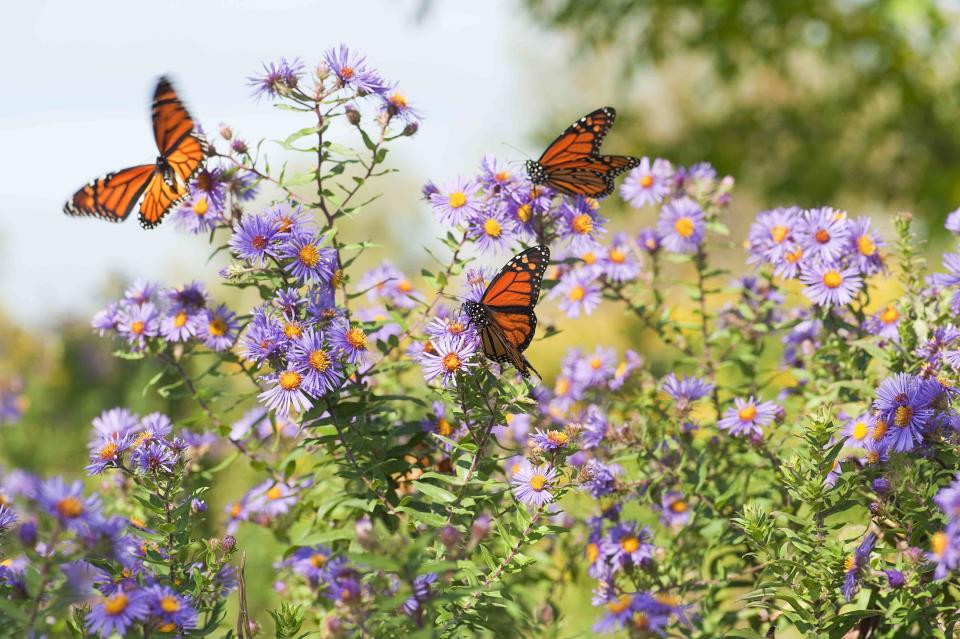
DebraLee Wiseberg/Getty Images
We'll show you the best flower varieties to get your garden fluttering. It's well known that you can attract pollinators by planting butterfly-favorite shades like pinks, purples, reds, yellows, and oranges. We all know that the butterfly bushes are one of the best shrubs we can plant to attract butterflies to the garden, but many plants produce clusters and spikes of blooms that are filled with nectar and cloaked in bright colors. You'll enjoy watching insects land on the bold blossoms of agapanthus, abelia, lantana, and fast-growing spiraea, which provide butterflies with shelter as well as beautiful blooms. Make sure these plants take well to their new home with this guide. Take a closer look at these butterfly-attracting, nectar-rich blooms to turn your garden into a magical butterfly oasis.
Abelia
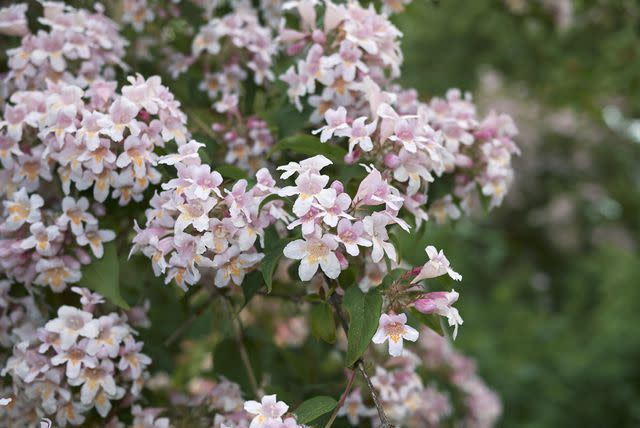
Getty Images
Botanical Name: Abelia
Sun Exposure: Full, partial
Soil Type: Rich, moist, well-drained, loamy
Soil pH: Acidic to neutral
This compact, rounded shrub is a winner for borders. If you plant abelias, you will be treated to pink or white blooms along with foliage in a variety of colors, from pink, white, and green to yellow, gold, and red. Some varieties have variegated foliage. Abelias are suited for USDA Zones 5-9.
Aster
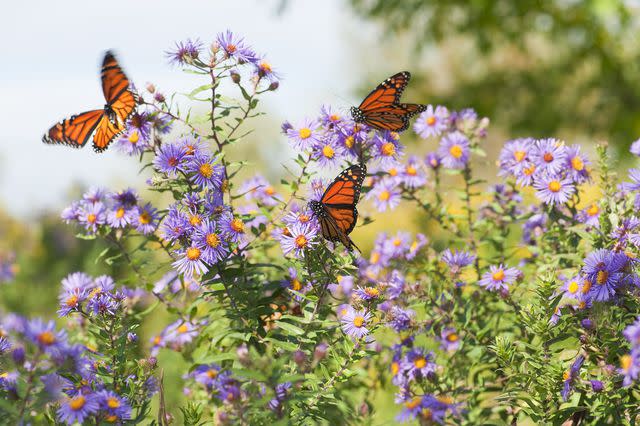
DebraLee Wiseberg/Getty Images
Botanical Name: Aster
Sun Exposure: Full, partial
Soil Type: Moist, well-drained, loamy
Soil pH: Slightly acidic, neutral
While there are lots of spring and summer-flowering, pollinator-attracting plants available to gardeners, plant a few fall bloomers, like asters, to keep butterflies visiting your garden later in the year. Asters bloom in purple, white, blue, and pink shades in USDA Zones 3-8.
Agapanthus
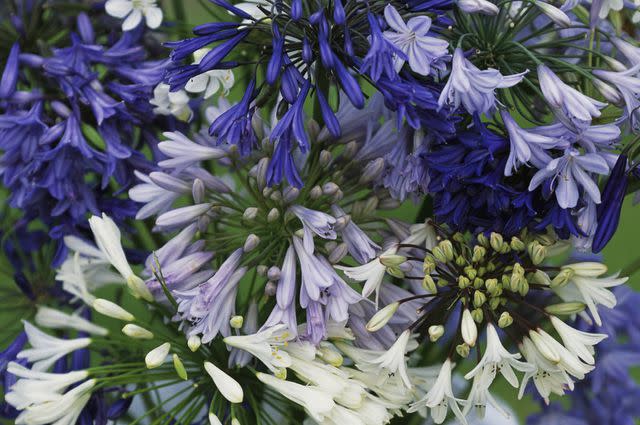
Michelle Garrett/Getty Images
Even the pollen of Agapanthus africanus is lilac-blue.Botanical Name: Agapanthus
Sun Exposure: Full, partial
Soil Type: Loamy, sandy, moist, well-drained
Soil pH: Neutral
Agapanthus blooms come in a variety of blue and purple hues. With deep blue coloring and dwarf sizes, some are perfect for patio containers, rock gardens, and borders, and they're also useful as cut flowers. Also, some agapanthus selections can tolerate near coastal conditions, frost, and neglect. If you live close to the sea, you may see even more plentiful blooms. This perennial is recommended for USDA Zones 8-10.
Bee Balm

Getty Images
Botanical Name: Monarda didyma
Sun Exposure: Full, partial
Soil Type: Moist, well-drained, clay
Soil pH: Acidic, neutral
A favorite of pollinators like butterflies, bees, and hummingbirds, bee balm (Monarda sp.) requires regular water and moist, well-draining soil. Gardeners typically prune bee balm in late spring, but it’s possible to prune during summer to alter the blooming period. Bee balm thrives in USDA Zones 4-9.
Black-Eyed Susan
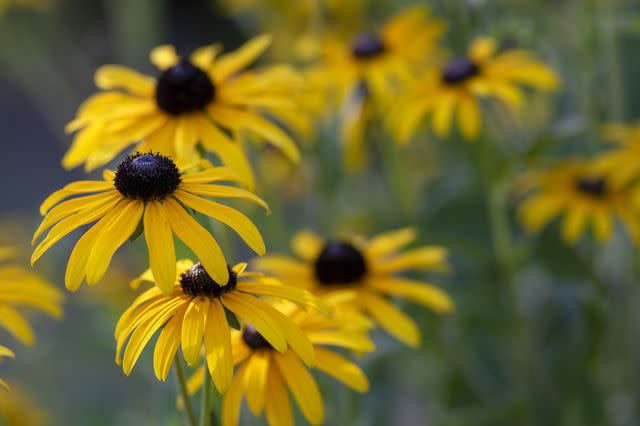
Iva Vagnerova/Getty Images
Botanical Name: Rudbeckia sp.
Sun Exposure: Full, partial
Soil Type: Well-drained, loamy, clay, sandy
Soil pH: Acidic, neutral, alkaline
Butterflies love black-eyed Susans, which provide them with nectar to gather and platforms that they can easily land on. Gold flowers bloom from spring through summer, and goldfinches eat their seeds in fall. These flowers can reach 2 to 4 feet tall, but they have been known to grow even higher in the right conditions. They're suited for USDA Zones 3-9.
Blazing Star
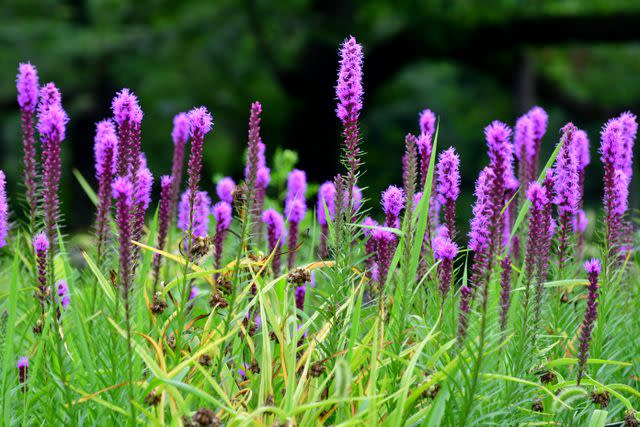
magicflute002/Getty Images
Botanical Name: Liatris spicata
Sun Exposure: Full
Soil Type: Clay, loamy, sandy
Soil pH: Acidic, neutral
With a name that nods to its striking appearance, the blazing star produces stalks of pink, white, or purple flowers that attract pollinators. It grows best in open spaces and with plenty of full sun. The plants are hardy in the South in USDA Zones 3-9, and the flowers of many blazing star species linger for a long time during the blooming season.
Butterfly Bush
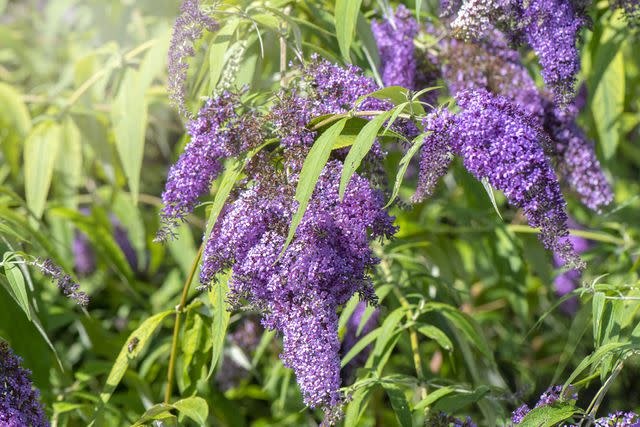
Jacky Parker Photography/Getty Images
Botanical Name: Buddleia davidii or Buddleja davidii
Sun Exposure: Full
Soil Type: Clay, loamy, sandy, well-drained
Soil pH: Acidic, neutral
Butterfly bush (Buddleia sp.), a bright bloomer loved by pollinators, flowers in summer. It tends to grow in an arching form and, depending on the variety, produces either flower spikes or bloom clusters in a wide variety of colors. It is recommended for USDA Zones 5-9.
Catmint
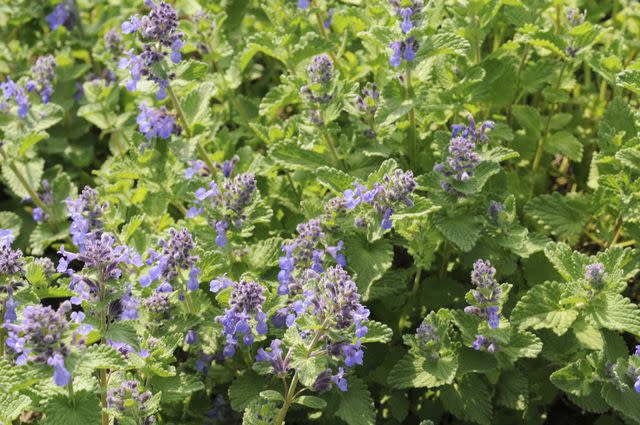
YOSHIHARU/Getty Images
Botanical Name: Nepeta x faassenii
Sun Exposure: Full, partial
Soil Type: Clay, loamy, sandy
Soil pH: Acidic, neutral, alkaline
Loved for its fragrance, catmint (Nepeta sp.) is a hardy perennial that grows in bushes of purple flower spikes. Its soft, gray-green leaves are edible and give off a minty fragrance. It can thrive in USDA Zones 3-9 in a variety of soils, as long as they are well-drained.
Coneflower
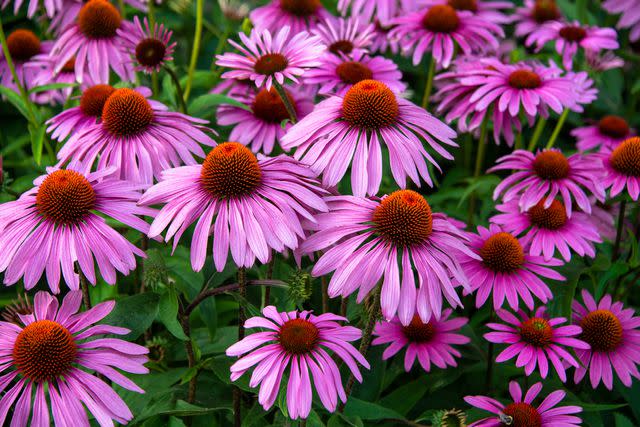
Nancybelle Gonzaga Villarroya/Getty Images
Botanical Name: Echinacea sp.
Sun Exposure: Full, partial
Soil Type: Well-drained
Soil pH: Acidic, neutral
As reliable blooms that appear in the heat of summer, coneflowers are treasured by gardeners in hot climates and butterflies who sip on the nectar of the blossoms. Coneflowers (Echinacea sp.) come in a variety of colors, including purple, yellow, red, white, pink, and orange. Zone hardiness depends on the species, but they are typically suited for USDA Zones 3-9.
Geranium
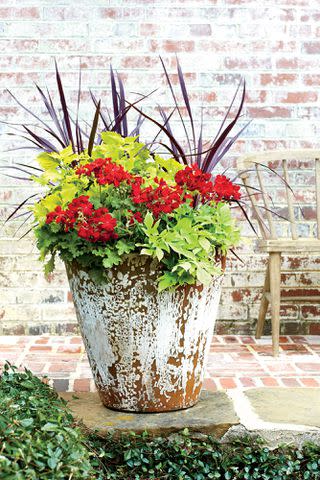
Botanical Name: Pelargonium
Sun Exposure: Full
Soil Type: Well-drained
Soil pH: Neutral, alkaline
Geraniums add fragrance and color to gardens and containers, and their red, pink, purple, and orange blooms will attract butterflies. The flowers we know and love as geraniums are actually Pelargoniums. Flowers in the Geranium genus are mostly wild species. Give them full sun, regular water, and fast-draining soil to keep them happy. Geraniums planted in containers can be combined with other plants for a stunning front porch display, and they can be moved throughout the day if they are getting too much or too little sun. They are suited for USDA Zones 9-11.
Goldenrod
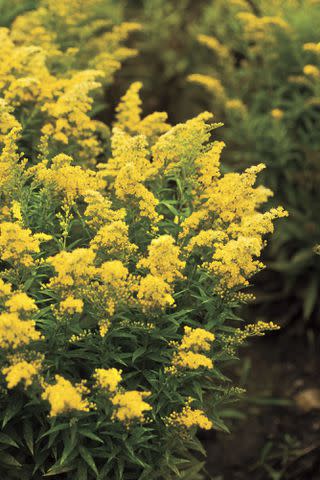
Botanical Name: Solidago
Sun Exposure: Full sun
Soil Type: Clay, loamy, well-drained
Soil pH: Acidic
Enjoy clusters of small flowers from mid-summer to fall. Perfect for natural areas, this showy wildflower attracts butterflies, songbirds, and other pollinators. It’s easy to grow as it tolerates dry and poor soils, drought, and clay. Deadhead spent flowers to encourage more blooms. Plant in USDA Zones 2a-8b.
Lantana
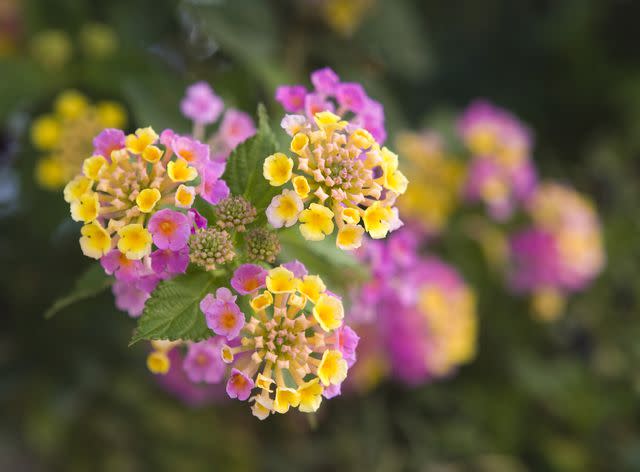
Botanical Name: Lantana spp.
Sun Exposure: Full
Soil Type: Well-drained
Soil pH: Acidic, neutral
Lantanas are some of the best-known garden plants that attract butterflies. They bloom in mounds across a vibrant spectrum of colors. Known to be drought- and salt-tolerant, these hardy plants can stand up to hot temperatures and difficult climates in USDA Zones 9-11.
Lavender
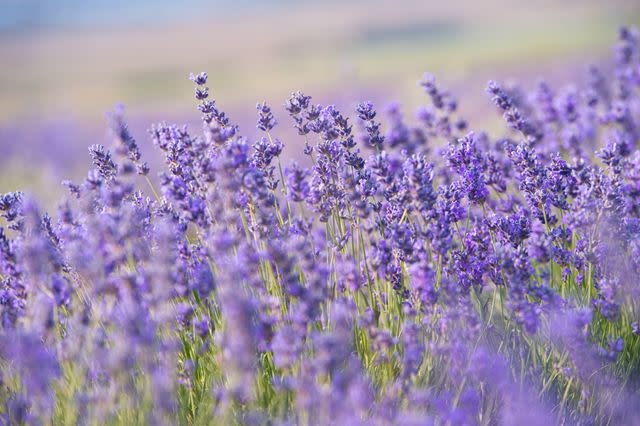
Natalia Spiridonova/Getty Images
Botanical Name: Lavandula spp.
Sun Exposure: Full
Soil Type: Well-drained
Soil pH: Alkaline
Many species of lavender are popular with butterflies. They are lovely additions to herb gardens, and they produce frilly purple spires and deeply aromatic foliage. Blooms and foliage from some species can be used for culinary purposes in the kitchen. Plant lavender in USDA Zones 5-9.
Mealycup Sage
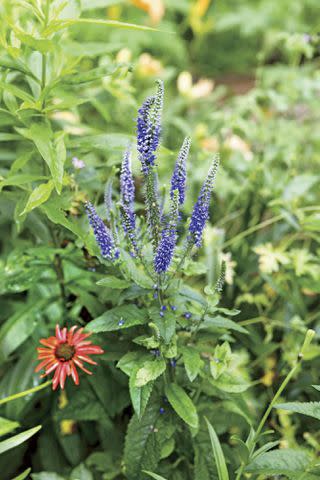
Botanical Name: Salvia ferinacea
Sun Exposure: Full, partial
Soil Type: Moist, well-drained
Soil pH: Acidic, neutral
Also called Victoria Blue Salvia, this herbaceous perennial is liked by gardeners for its long blooming season and tolerance to drought. Butterflies are drawn to the violet-blue blooms. Deadhead spent flowers to increase blooms, or let them go to seed for the next growing season. Perfect for USDA Zones 8-10.
Milkweed
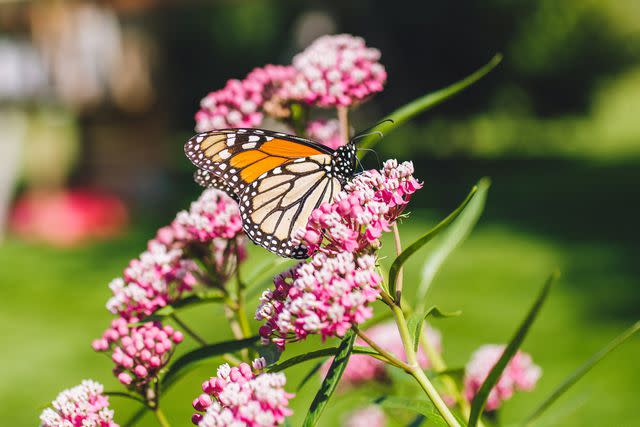
Annie Otzen/Getty Images
Botanical Name: Asclepias spp.
Sun Exposure: Full
Soil Type: Clay, loamy, sandy, rocky, dry, well-drained
Soil pH: Acidic, neutral
Hardy milkweed produces bright blooms. One of the most popular is butterfly weed (Asclepias tuberosa), a native species that has orange and yellow flowers in late summer. Milkweed’s sap is toxic, so if you plant it, ensure pets and children are protected. Grow it in USDA Zones 3-10.
Pentas
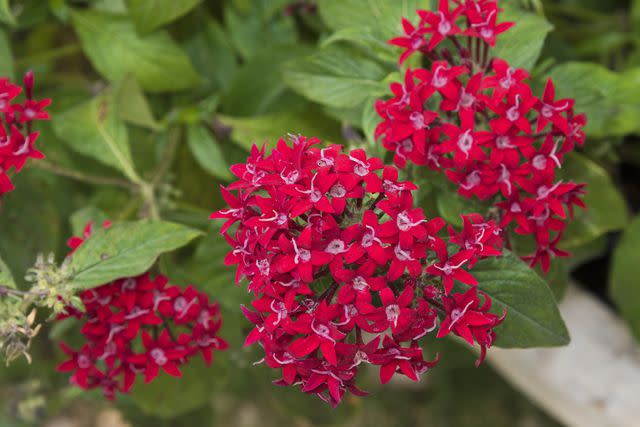
Botanical Name: Pentas lanceolata
Sun Exposure: Full, partial
Soil Type: Clay, loamy, sandy
Soil pH: Acidic
These sun-loving plants bloom in bounds of flower clusters in hues of scarlet, pink, white, lavender, or purple and are a butterfly's paradise. Lush dark green and white variegated foliage provides hearty additions to the garden. They grow from 12 to 24 inches high with a clumping habit in USDA Zones 9-11.
Phlox
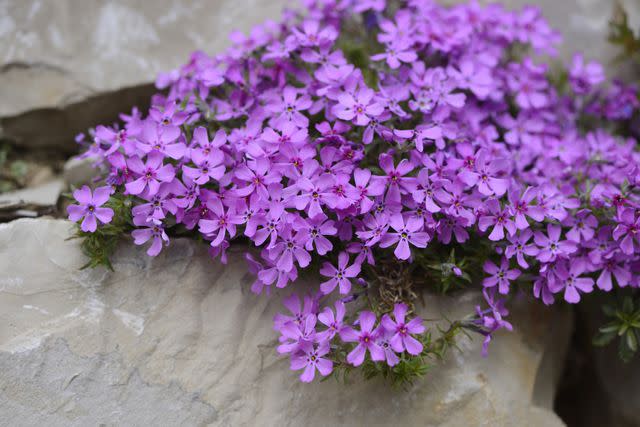
David & Micha Sheldon/Getty Images
Botanical Name: Phlox paniculata
Sun Exposure: Full, partial
Soil Type: Clay, loamy, well-drained
Soil pH: Acidic, neutral, alkaline
These flowering plants are perennials that bloom in a spectrum of forms and a rainbow of colors, including coral, pink, orange, purple, red, yellow, white, and blue. The long-blooming flowers appear in summer and draw butterflies with their nectar. Phlox is suited for USDA Zones 4-8.
Shasta Daisy
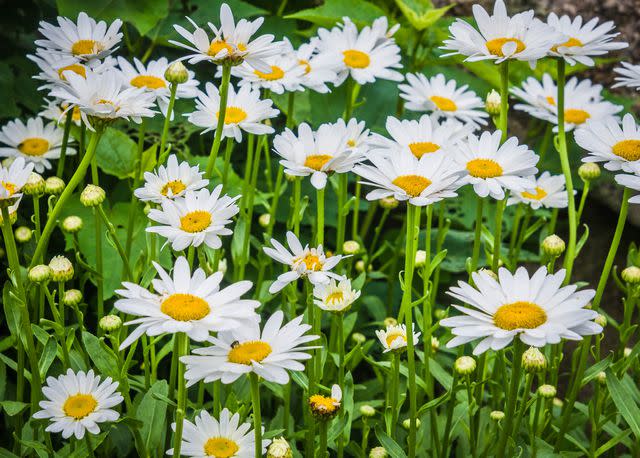
Getty Images/KenWiedemann
Botanical Name: Leucanthemum x superbum
Sun Exposure: Full
Soil Type: Clay, loamy, sandy, well-drained
Soil pH: Neutral
Leucanthemums are summer-blooming perennials with large cream-to-lemon decorative blooms with fancy fringed deep golden central petals. Many varieties will provide plentiful blooms with strong disease resistance. Shasta daisies are identified as Leucanthemum x superbum. They typically prefer well-drained soil in sunny borders in USDA Zones 5-9.
Snapdragon
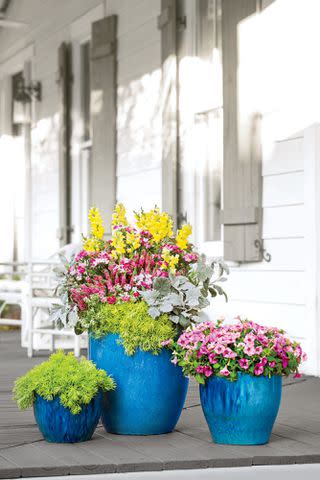
Botanical Name: Antirrhinum majus
Sun Exposure: Full
Soil Type: Moist, well-drained
Soil pH: Neutral
Snapdragons multiply easily, provide dramatic height, and make beautiful cut flowers. Plant them in containers, hanging baskets, flower beds, or rock gardens in USDA Zones 6-11. They are cool season flowers that bloom in early spring or during mild winters. If you keep them watered during summer, they may bloom again in the fall.
Spiraea
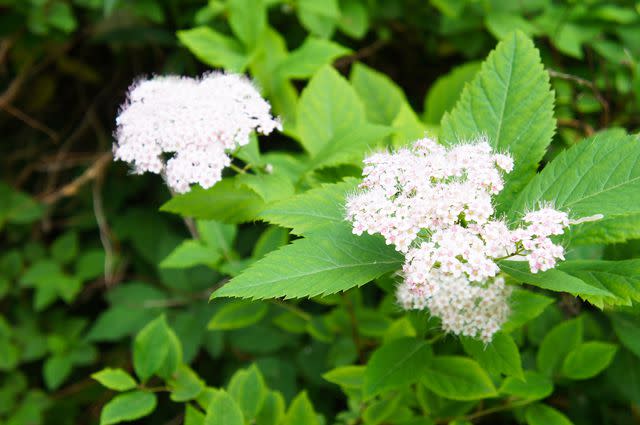
skymoon13/Getty Images
Botanical Name: Spiraea japonica
Sun Exposure: Full, partial
Soil Type: Clay, loamy, rocky, well-drained
Soil pH: Alkaline
With spiraea, you can expect profuse spring flowers with lacy forms in shades of red, purple, pink, or white in USDA Zones 4-9. There are also sporadic blooms throughout the summer months. Spiraeas are sometimes known as meadowsweets. They are heat tolerant and will attract both birds and butterflies.
Trumpetflower
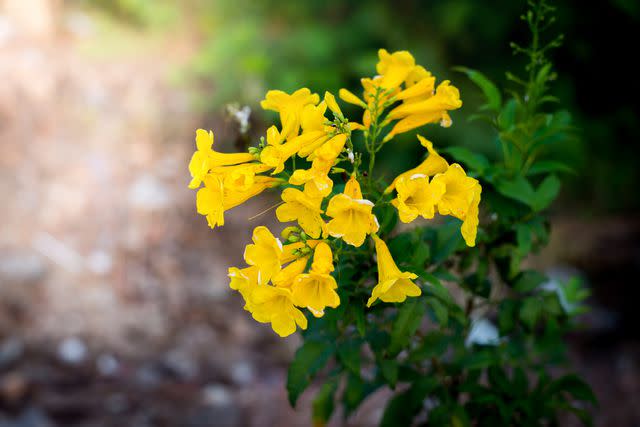
Thaishutter_2528/Getty Images
Botanical Name: Tecoma stans
Sun Exposure: Full, partial
Soil Type: Clay, loamy, sandy, well-drained
Soil pH: Acidic, neutral, alkaline
These evergreen, mid-sized shrubs have a subtropical to tropical appearance and bell-shaped flowers in yellow, orange, red, or tangerine. They can be counted on to bloom continuously until frost. You can use them as border plantings, in a container, as accents, or planted en masse for a colorful punch in the garden. Grow in USDA Zones 8-11.
Verbena
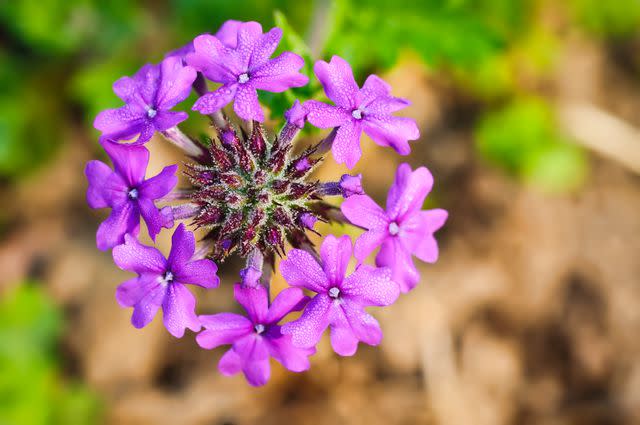
Camrocker/Getty Images
Botanical Name: Verbena
Sun Exposure: Full
Soil Type: Well-drained
Soil pH: Slightly acidic, neutral
These stunners bloom from spring until fall in USDA Zones 8-11. Some produce pale purple flowers that form crowns around deep green foliage, but others bloom in pink, red, blue, and white hues. The best part? They're disease- and pest-resistant and drought-tolerant. Verbenas come in both annual and perennial options.
Veronica
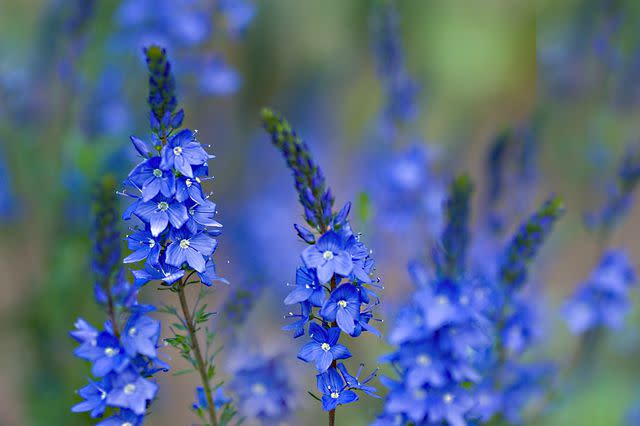
G.N. van der Zee/Getty Images
Botanical Name: Veronica
Sun Exposure: Full, partial
Soil Type: Clay, loamy, sandy
Soil pH: Acidic, alkaline, neutral
This compact bush is covered in eye-catching spikes of blooms all season long. It will flower up to the first frost and is drought-tolerant. Varieties of veronicas (also known as speedwells) bloom in pink, purple, white, or blue hues. Foliage varies too and can be gold, green, or silver. Grow in USDA Zones 6-9.
Weigela

Botanical Name: Weigela florida
Sun Exposure: Full, partial
Soil Type: Clay, loamy, sandy, well-drained
Soil pH: Acidic, neutral, alkaline
These beauties will provide a rainbow of color from spring to fall. They feature attractive, variegated foliage with dense clusters of soft pink, red, yellow, or white funnel-shaped flowers that bloom in profusion in late spring or early summer in USDA Zones 4-8.
Zinnia

Botanical Name: Zinnia spp.
Sun Exposure: Full
Soil Type: Moist, well-drained
Soil pH: Neutral
These popular summer annuals are loved for their bright flowers that bloom throughout summer until the last frost. Gardeners like how easy they are to care for. They will grow in average soil and can tolerate dry periods, though they prefer moist, well-drained soil. Butterflies and other pollinators are attracted to them. Plant in USDA Zones 6-11.
For more Southern Living news, make sure to sign up for our newsletter!
Read the original article on Southern Living.

